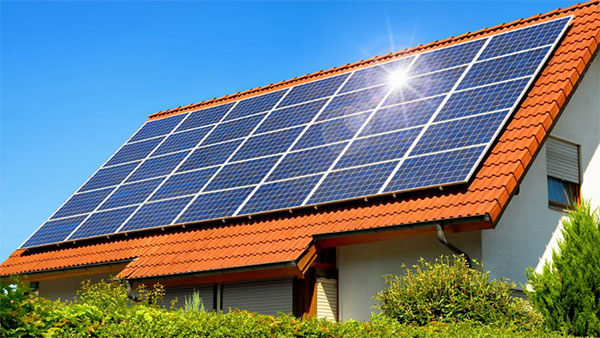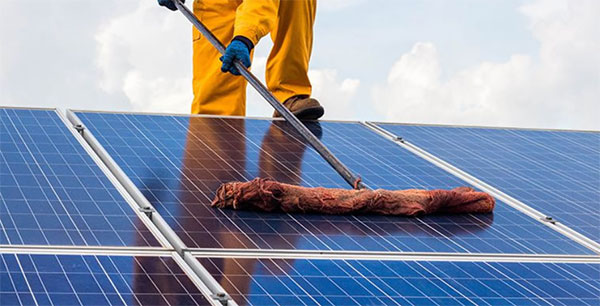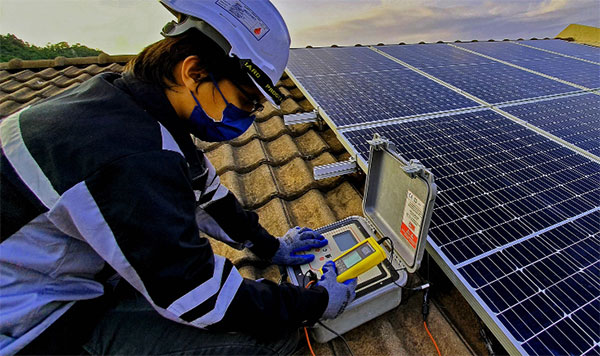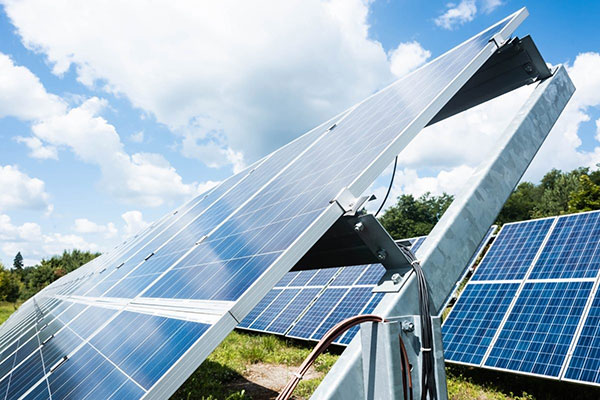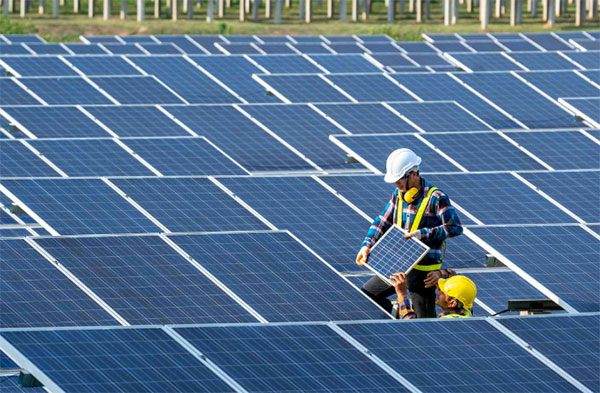Description
A solar cell can power a house for varying durations based on the system's size, sunlight hours, and the home's energy consumption, but typically, a residential solar system provides power throughout daylight hours with excess stored for nighttime use.
Components of a Residential Solar System
Solar panels
Solar panels, often known as photovoltaic (PV) panels, are the main component that converts sunlight into electricity. These panels are composed of numerous solar cells that work together to produce electrical energy.- Material: Typically made from silicon, which can be monocrystalline or polycrystalline.
- Efficiency: Ranges between 15% to 22% for most residential panels.
- Size: A standard panel is about 65 inches by 39 inches.
- Lifespan: Typically 25-30 years with decreasing efficiency over time.
- Cost: Varies by brand and efficiency, but on average, they cost between $150 to $350 per panel.
Inverters
Inverters play a crucial role in converting the direct current (DC) produced by the solar panels into alternating current (AC) suitable for home use.- Types: Mainly string inverters and microinverters.
- Efficiency: Most have an efficiency rate of 94% to 99%.
- Lifespan: Typically 10-15 years.
- Cost: Ranges from $1,000 to $1,500 for string inverters and $150 to $250 for microinverters per unit.
Mounting structures
Mounting structures support and position solar panels at the optimal angle and direction for maximum sunlight exposure.- Materials: Often made from aluminum or stainless steel for durability and resistance to rust.
- Angle: Usually tilted at an angle equivalent to the location's latitude for optimal solar capture.
- Cost: Typically $100 to $500, depending on the size and material.
Solar batteries
Solar batteries store excess electricity produced by the solar panels for use when there's no sunlight.- Types: Popular ones include lithium-ion, lead-acid, and saltwater.
- Capacity: Common home batteries offer 5 kWh to 15 kWh of storage.
- Lifespan: Generally 5-15 years based on usage and type.
- Cost: Prices range between $5,000 to $7,500, depending on capacity and brand.
Monitoring and control
Monitoring and control systems help homeowners track the performance of their solar system and detect any issues.- Functions: Real-time tracking of power generation, consumption, and storage.
- Features: Often provide remote access via smartphones or computers.
- Price: Some systems come free with the solar installation, while advanced systems can cost up to $500.
- Lifespan: Varies, but most last up to 10 years.
Factors Affecting the Duration of Power
Solar cell efficiency
Solar cell efficiency determines how well a solar cell converts sunlight into electricity. The higher the efficiency, the more power you can generate from a given surface area. Current residential solar panels offer efficiencies ranging from 15% to 22%. However, some high-end panels, often made from monocrystalline silicon, can achieve efficiencies closer to 24%.Geographic location and solar irradiance
The amount of sunlight received varies based on geographic location. Places closer to the equator, like parts of Brazil or Indonesia, generally receive more consistent sunlight throughout the year compared to regions further north or south, like Canada or Argentina. Solar irradiance refers to the power received from the sun in a specific area, often measured in watts per square meter (W/m²). Areas with higher solar irradiance can produce more electricity using the same solar setup.Seasonal variations
Different seasons bring variations in the number of daylight hours and the angle of sunlight. Winter months, especially in northern and southern latitudes, can have shorter days and lower solar energy production. On the other hand, summer months might experience longer days, translating to extended power production.Orientation and tilt of panels
The direction and angle at which solar panels face can significantly impact their energy output. In the northern hemisphere, panels typically face south for optimal sunlight exposure. The tilt angle is often set equivalent to the location's latitude to achieve the best annual performance. For instance, a house in New York (latitude approx. 40°N) would ideally have its solar panels tilted at around 40°.Shade and obstructions
Shading drastically reduces solar panel efficiency. Even if a small portion of a solar panel experiences shading, it can hinder the performance of the entire panel or even the whole array. Common obstructions include trees, chimneys, or neighboring buildings. It's vital to ensure minimal shading throughout the day for optimal solar power generation. Regular maintenance, like trimming overhanging branches, can also help in maximizing the duration of power. In conclusion, the duration of power a solar setup can provide is influenced by various interconnected factors. When planning a solar installation, it's essential to consider each of these aspects to optimize the system's performance and value.Consumption of a Typical House
Average daily energy usage
The energy consumption in a standard home varies based on its size, the number of inhabitants, and the appliances in use. On average, a US household uses about 877 kWh per month, translating to roughly 29 kWh per day. This figure can change depending on factors such as the region's climate, the age of the house, and the number of electronic devices in operation.Peak power demand periods
Peak power demand in homes typically occurs during mornings and evenings. In the morning, from 6 am to 9 am, the demand spikes as people prepare for their day, using appliances like showers, coffee makers, and hairdryers. In the evening, from 5 pm to 8 pm, households experience another surge in power usage when lights turn on, dinner preparations begin, and electronic devices like televisions and computers are in use. Homes in regions with extreme temperatures might also see peaks during hot or cold times of the day when HVAC systems work hardest.Energy-saving appliances and habits
Investing in energy-efficient appliances can significantly reduce a home's energy consumption. For instance, an Energy Star certified refrigerator can use up to 40% less energy than its conventional counterparts. Beyond appliances, adopting certain habits can also impact energy savings:- Thermostat Management: Setting the thermostat a few degrees lower in winter or higher in summer can result in noticeable energy savings without compromising comfort.
- LED Lighting: Switching to LED lights from traditional incandescent bulbs can save up to 80% of lighting energy costs.
- Limiting Standby Power: Unplugging devices when not in use or using power strips can prevent electronics from consuming "vampire" energy, potentially saving up to 10% on electricity bills.
- Sealing and Insulation: Properly sealing homes and investing in good insulation can reduce heating and cooling costs by up to 20%.
Storage Solutions
Overview of solar batteries
Solar batteries store excess energy produced by solar panels, allowing households to tap into this stored energy during times when the sun isn't shining. This storage solution provides more consistent power, reduces dependence on the grid, and can offer financial savings, especially when grid electricity prices are high. Solar batteries mostly utilize lithium-ion technology, known for its high energy density and long lifespan.Leading brands and their capacities
Several brands stand out in the market for their reliability, performance, and technological advancements:- Tesla Powerwall: With a storage capacity of 13.5 kWh, Tesla's solution is one of the most recognized in the market. It features touch-safe technology and can be mounted indoors or outdoors.
- LG Chem RESU: Offering capacities ranging from 3.3 kWh to 13.3 kWh, LG's RESU batteries are compact and suitable for various home sizes.
- Tongwei: A notable player in the solar industry, Tongwei provides batteries known for their quality and efficiency. While specific capacities might vary, they typically offer products ranging from 5 kWh to 15 kWh, suitable for both small households and larger properties.
- SonnenBatterie: Sonnen offers eco-friendly and long-lasting batteries with capacities ranging from 5 kWh to 15 kWh.
Battery life and maintenance
Solar batteries typically have a lifespan ranging from 10 to 15 years. However, their storage capacity and efficiency might decrease over time. Most solar batteries come with a warranty that guarantees a certain efficiency level for a decade or more. Maintenance for solar batteries is minimal. However, some best practices include:- Regular Monitoring: Keeping an eye on the battery's performance metrics can help detect issues early on.
- Temperature Regulation: Batteries function best in moderate temperatures. If installed outside, they should be shielded from extreme weather conditions.
- Professional Inspections: Having occasional checks by professionals can ensure the system is functioning optimally and safely.
Calculating the Power Duration
Step-by-step guide on determining solar cell output
- Determine Solar Panel Capacity: Start by identifying the total capacity of your solar panels. Most residential solar panels have a capacity between 250-400 watts.
- Estimate Sunlight Hours: Research the average daily sunlight hours for your location. For instance, if you're in a region like California, you might receive an average of 5-6 sunlight hours per day.
- Calculate Daily Energy Production: Multiply the solar panel capacity by the average sunlight hours. For a 300-watt panel getting 5 hours of sunlight, the energy produced would be 1,500 watt-hours or 1.5 kWh.
- Account for Solar Cell Efficiency: Solar cell efficiency can vary, with many modern cells having an efficiency of around 18-22%. If your panel has an efficiency of 20%, and it's exposed to 1 kWh of sunlight, it will produce 200 watt-hours of electricity. Ensure to factor this into your calculations.
- Subtract Energy Losses: Energy losses occur due to inefficiencies in inverters, temperature effects, and minor shading. On average, expect about a 10% loss in the system. If you calculated a daily output of 1.5 kWh, after considering losses, you'd have around 1.35 kWh.
- Compare with Household Consumption: Once you have your daily energy production, compare it to your home's average energy consumption. This will give you an idea of how much of your daily energy needs can be met by your solar system.
Case studies: Examples of different homes and their solar power durations
| Property Type | Size (sq ft) | Daily Energy Consumption (kWh) | Solar System Size (kW) | Estimated Daily Production (kWh) | Power Duration |
|---|---|---|---|---|---|
| Small Urban Apartment | 750 | 10 | 2 | 7 | Provides power for approx. 70% of the day's needs |
| Suburban Family Home | 2,500 | 30 | 5 | 18 | Caters to around 60% of the daily energy needs |
| Rural Large Property | 5,000 | 60 | 10 | 36 | Powers roughly 60% of the daily energy requirements |

